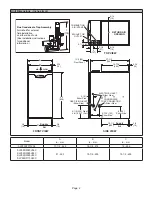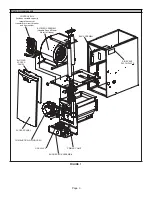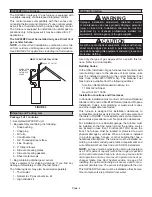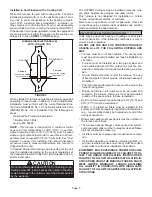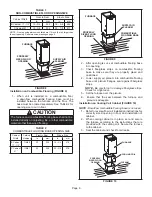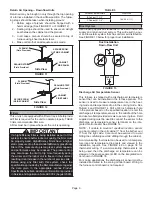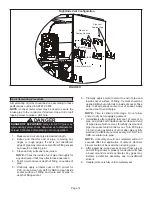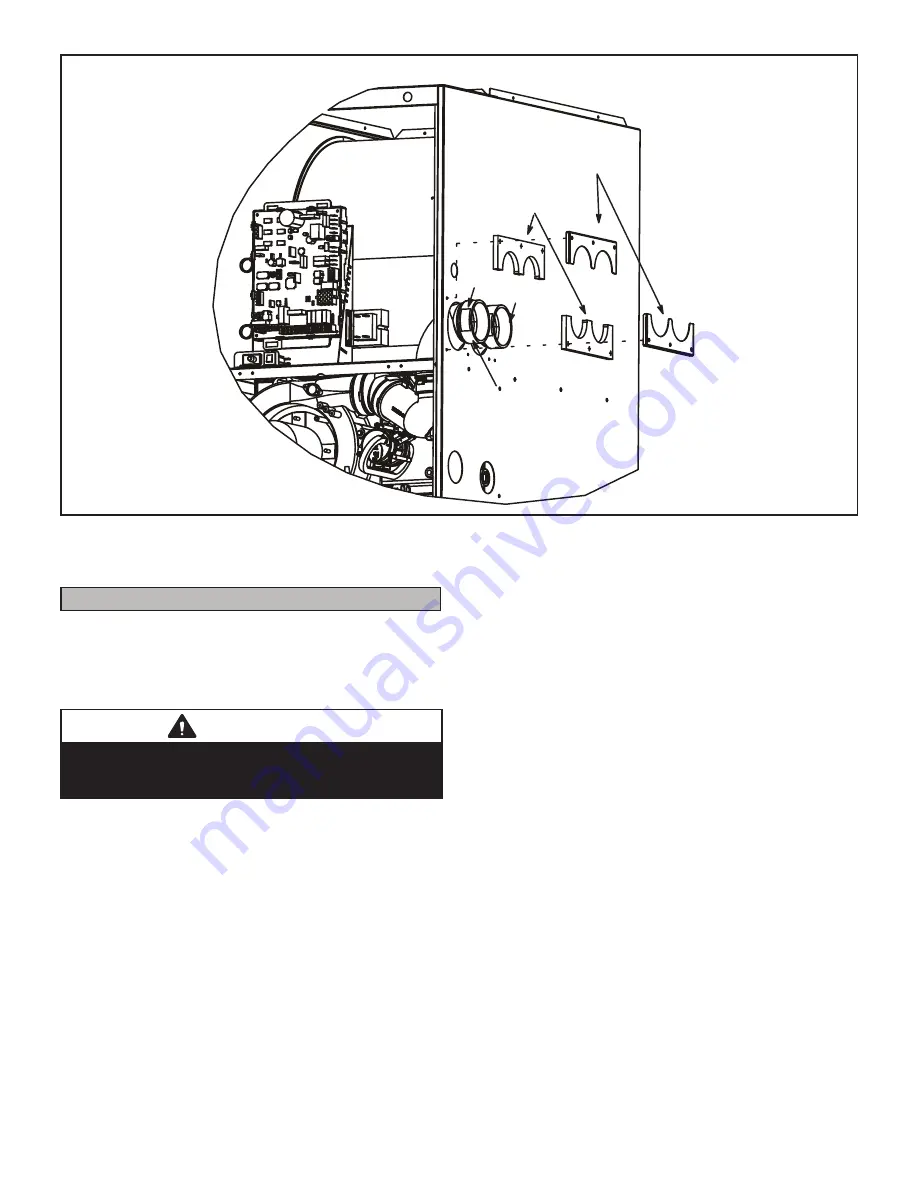
Page 14
Right Side Vent Configuration
Side Vent
Sealing Plate
Side Vent
Sealing Gaskets
Street Elbows (2)
Intake
Exhaust
FIGURE 17
Joint Cementing Procedure
All cementing of joints should be done according to these
pecifications outlined in ASTM D 2855.
NOTE -
A sheet metal screw may be used to secure the
intake pipe to the connector, if desired. Use a drill or self
tapping screw to make a pilot hole.
DANGER
DANGER OF EXPLOSION!
Fumes from PVC glue may
ignite during system check. Allow fumes to dissipate for
at least 5 minutes before placing unit into operation.
1 - Measure and cut vent pipe to desired length.
2 - Debur and chamfer end of pipe, removing any
ridges or rough edges. If end is not chamfered,
edge of pipe may remove cement from fitting socket
and result in a leaking joint.
3 - Clean and dry surfaces to be joined.
NOTE -
Check the inside of vent pipe thoroughly for
any obstruction that may alter furnace operation.
4 -
Test fit joint and mark depth of fitting on outside of
pipe.
5 - Uniformly apply a liberal coat of PVC primer for
PVC or use a clean dry cloth for ABS to clean inside
socket surface of fitting and male end of pipe to
depth of fitting socket.
6 - Promptly apply solvent cement to end of pipe and
inside socket surface of fitting. Cement should be
applied lightly but uniformly to inside of socket. Take
care to keep excess cement out of socket. Apply
second coat to end of pipe.
NOTE -
Time is critical at this stage. Do not allow
primer to dry before applying cement.
7 - Immediately after applying last coat of cement to
pipe, and while both inside socket surface and end
of pipe are wet with cement, forcefully insert end of
pipe into socket until it bottoms out. Turn PVC pipe
1/4 turn during assembly (but not after pipe is fully
inserted) to distribute cement evenly. DO NOT turn
ABS or cellular core pipe.
NOTE -
Assembly should be completed within 20
seconds after last application of cement. Hammer
blows should not be used when inserting pipe.
8 - After assembly, wipe excess cement from pipe at
end of fitting socket. A properly made joint will show
a bead around its entire perimeter. Any gaps may
indicate a defective assembly due to insufficient
solvent.
9 - Handle joints carefully until completely set.
Summary of Contents for SIGNATURE SLP99DF070V36
Page 40: ...Page 40 FIGURE 49...


